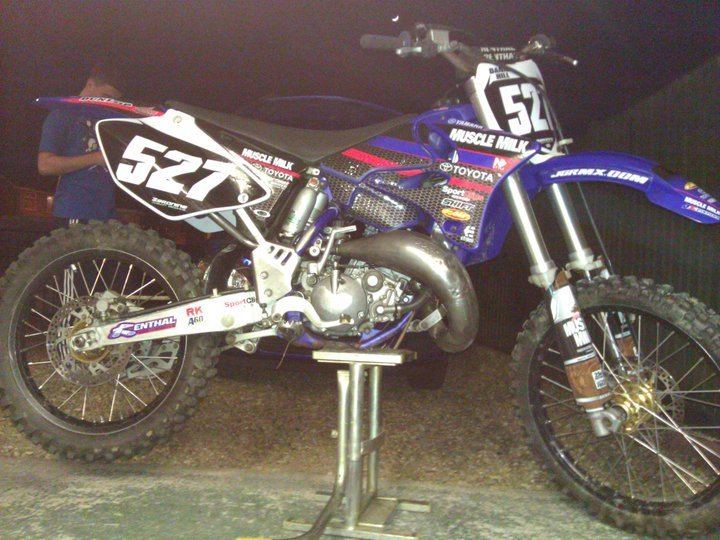Torque 18.3 ft/lbs | Production 1974–Present Power 33 hp (25 kW) | |
 | ||
Engine 124 cc (7.6 cu in) single-cylinder, 2 stroke, reed valve inducted | ||
The Yamaha YZ125 is a motorcycle with a 124.9 cc two-stroke engine designed for motocross riding and produced by Yamaha Motor Company. It was first produced in 1974 and for the first year was made with dual rear shocks (Thermalflow shocks) and in 1975 released its first monoshock design the YZ125C and has continued production with a new model being produced every year to date. The YZ 125's produced from 1996 to 2002 are considered by some to be the best dirt bikes ever, due to its wide powerband and excellent handling. The YZ125 has been ridden to five AMA National Motocross Championships, and multiple AMA Regional Supercross Championships.
Contents
In 2001, Yamaha released a bike designed to complement the YZ125, the four-stroke YZ250F. The two bikes share a rolling chassis and are eligible to compete in the same racing class.
Engine
The YZ 125 has had a liquid-cooled 124 cc, reed valve inducted, two-stroke engine since 1982. The models from 1974 to 1981 were air-cooled and also two-stroke. It breathes through a 38 mm TMX carburetor made by Mikuni. Stock, the engine produces 33 hp (25 kW) at the rear wheel.
Transmission
The YZ125 has been built with five- or six-speed sequential gearboxes depending on model year. The 2005 model has a Constant mesh wet, multiple-disc coil spring clutch. The revised gear ratios as of the 2005 model are:
Frame
From 1974 through 2004, the YZ 125 had a single backbone frame made from steel. It generally averaged from 176 to 198 lb (80 to 90 kg). For the 2005 year, however, Yamaha switched to a single backbone frame constructed from an aluminum alloy. This frame material change dropped the weight to 190 lb.(dry weight) For 2008 models, additional weight savings in the wheel assemblies and front fork suspension have yielded additional weight savings making wet weight, no gas sub-200 lb. Aluminum framed YZ125's are notably 'flickable' and sometimes this trait is seen as a drawback since they tend to become more difficult to control on rough surfaces.
